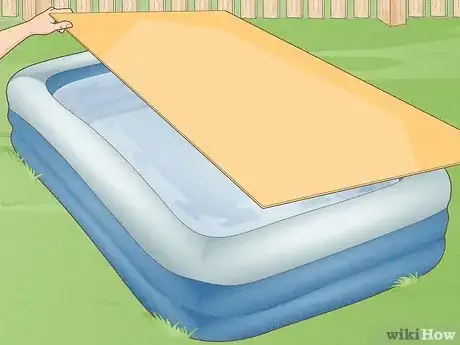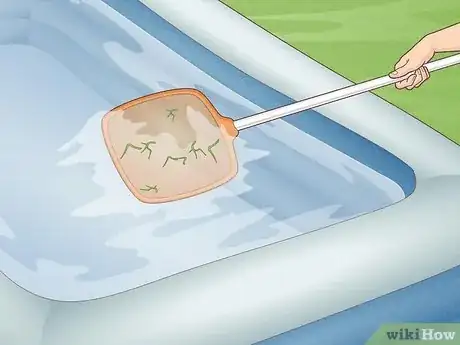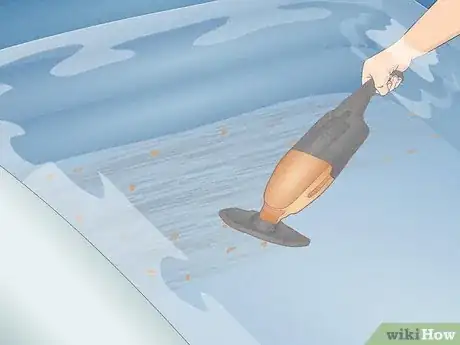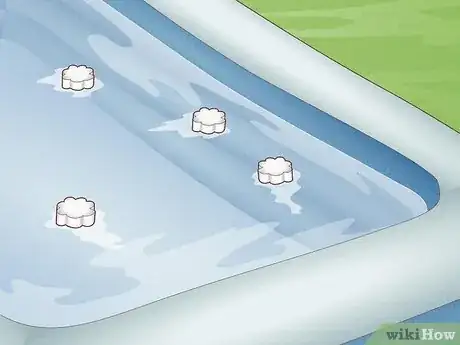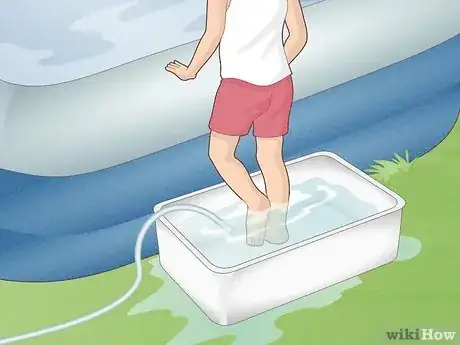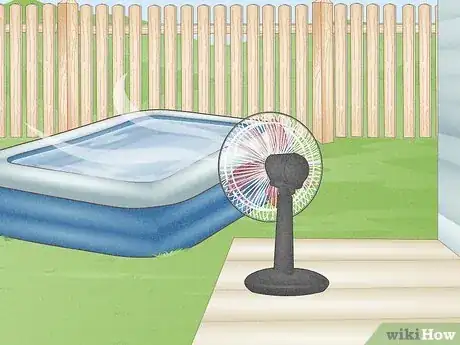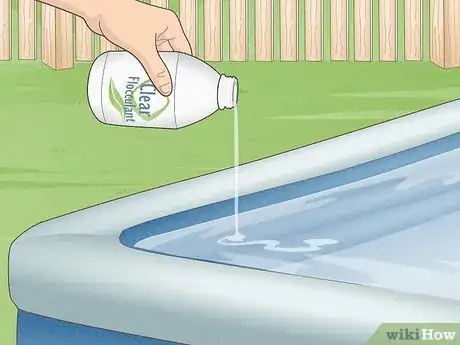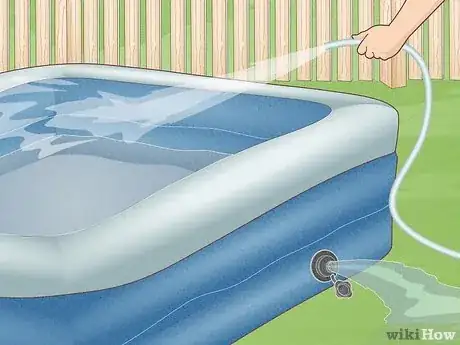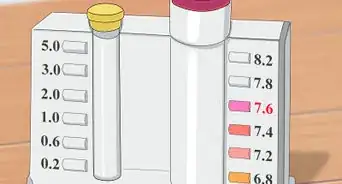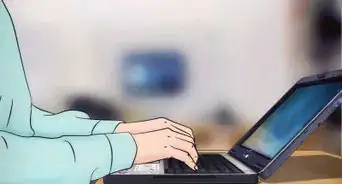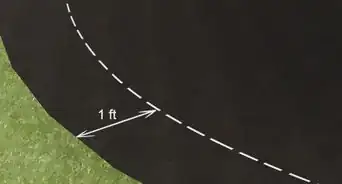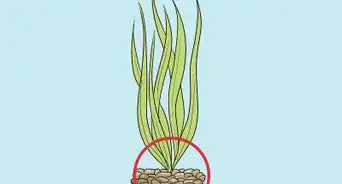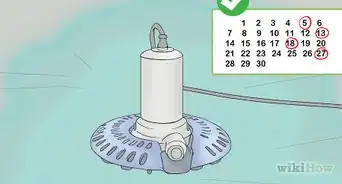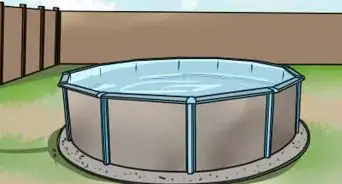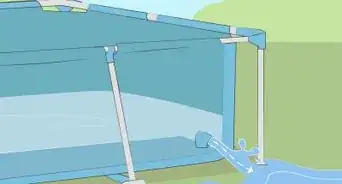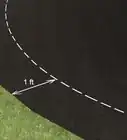This article was co-authored by Rob Litman and by wikiHow staff writer, Eric McClure. Rob Litman is a Landscaper, General Contractor, and the CEO of Vitoli Inc., a landscaping, hardscaping, ecoscaping, and swimming pool design company in Los Angeles, California. With over 20 years of experience in construction, Rob specializes in energy-efficient and drought-tolerant landscaping. He holds General Building Contractor (Class B) and Registered Pool/Spa Contractor Licenses. In 2007, Rob won House of the Year in Gardena, California.
There are 13 references cited in this article, which can be found at the bottom of the page.
This article has been viewed 33,094 times.
Your kiddos are having a blast in their inflatable pool, but dumping and refilling the water every day can be a hassle. Keep in mind that germs spread easily in inflatable pools, which is why the CDC recommends dumping out the water daily to be on the safe side.[1] That said, if you're looking for other options, you've come to the right place! In this article, we’ll cover everything you need to know about keeping the water clean in an inflatable pool so you don't have to refill it as often.
Steps
Expert Q&A
-
QuestionHow often do you vacuum a pool?
 Rob LitmanRob Litman is a Landscaper, General Contractor, and the CEO of Vitoli Inc., a landscaping, hardscaping, ecoscaping, and swimming pool design company in Los Angeles, California. With over 20 years of experience in construction, Rob specializes in energy-efficient and drought-tolerant landscaping. He holds General Building Contractor (Class B) and Registered Pool/Spa Contractor Licenses. In 2007, Rob won House of the Year in Gardena, California.
Rob LitmanRob Litman is a Landscaper, General Contractor, and the CEO of Vitoli Inc., a landscaping, hardscaping, ecoscaping, and swimming pool design company in Los Angeles, California. With over 20 years of experience in construction, Rob specializes in energy-efficient and drought-tolerant landscaping. He holds General Building Contractor (Class B) and Registered Pool/Spa Contractor Licenses. In 2007, Rob won House of the Year in Gardena, California.
Licensed Landscaper & General Contractor Use your pool vacuum once a week to keep the water clean and clear. It only takes a few minutes to suck up any dirt or debris.
Use your pool vacuum once a week to keep the water clean and clear. It only takes a few minutes to suck up any dirt or debris.
Warnings
- Many people add salt to water to neutralize bacteria and keep it clean. Unfortunately, salt water can be too abrasive for an inflatable pool’s lining, and salt water needs to be heated to really maximize its antibacterial features.[18]⧼thumbs_response⧽
- As wasteful as it feels, you really should dump the water out daily. Since there’s no pump or filter, inflatable pool water can attract all kinds of bugs, bacteria, and viruses. If you want to enjoy the summer safely, it really is best to dump the water after each use.[19]⧼thumbs_response⧽
- When treating inflatable pool water, it’s hard to know how much bleach or chlorine you need to add to the water. Too much, and it may harm your child’s skin. Too little, and it might not kill the bacteria, which is why the CDC recommends against using it.[20] If you do so anyway, make sure the chlorine level is 1-3 ppm (parts per million) by doing frequent tests.⧼thumbs_response⧽
References
- ↑ https://www.cdc.gov/healthywater/swimming/swimmers/inflatable-plastic-pools.html
- ↑ https://www.maids.com/blog/how-to-keep-a-kiddie-pool-clean/
- ↑ https://www.maids.com/blog/how-to-keep-a-kiddie-pool-clean/
- ↑ https://www.myperfectpool.com.au/keeping-kiddie-pools-clean.html
- ↑ https://mybackyardlife.com/how-to-keep-inflatable-pool-water-clean/
- ↑ https://www.thesun.co.uk/fabulous/15241078/parents-ways-paddling-pool-water-clean-washing-bowl-hack/
- ↑ https://www.thesun.co.uk/fabulous/15241078/parents-ways-paddling-pool-water-clean-washing-bowl-hack/
- ↑ https://www.bobvila.com/articles/best-inflatable-pool/
- ↑ https://www.maids.com/blog/how-to-keep-a-kiddie-pool-clean/
- ↑ https://www.thesun.co.uk/fabulous/15241078/parents-ways-paddling-pool-water-clean-washing-bowl-hack/
- ↑ https://www.nytimes.com/2013/07/16/science/a-low-tech-mosquito-deterrent.html
- ↑ https://dolphinpacific.co.nz/pool-flocculant-guide/
- ↑ https://backyardsidekick.com/how-to-clean-an-inflatable-pool-remove-and-prevent-mold/
- ↑ https://www.nytimes.com/wirecutter/blog/best-inflatable-kiddie-pool/
- ↑ https://www.maids.com/blog/how-to-keep-a-kiddie-pool-clean/
- ↑ https://www.cdc.gov/healthywater/swimming/swimmers/inflatable-plastic-pools.html
- ↑ https://www.ncbi.nlm.nih.gov/books/NBK441921/
- ↑ https://www.gardeningetc.com/us/advice/experts-epsom-salt-in-kiddie-pool
- ↑ https://news.vcu.edu/article/Whats_wading_in_the_water
- ↑ https://www.cdc.gov/healthywater/swimming/swimmers/inflatable-plastic-pools.html
